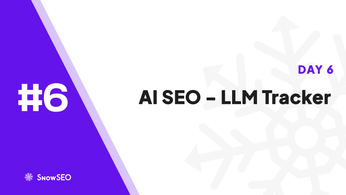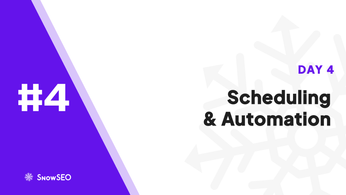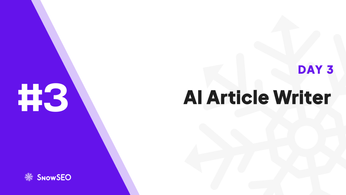
Ultimate Guide to Multilingual SEO Excellence
Table of Contents
Unlock the potential of global markets with effective multilingual SEO. Many companies struggle with reaching international audiences due to language barriers, inconsistent content localization, and underoptimized technical structures. Without a clear roadmap, your brand’s message can get lost in translation-literally.
This guide provides comprehensive strategies for implementing successful multilingual SEO, covering everything from keyword research in diverse languages to technical best practices for hreflang tags, URL structures, and site architecture. You’ll learn how to leverage tools like Ahrefs, SEMrush, and Google Search Console to uncover opportunities in new regions and ensure search engines correctly index your localized pages.
Supported by industry experts and real-world case studies-highlighting a 75% traffic increase through multilingual strategies-this resource equips SEO professionals and digital marketers with actionable insights. Follow each step to craft a cohesive, user-centric experience that resonates across cultures and drives sustainable organic growth worldwide.
Understanding Multilingual SEO
What is Multilingual SEO?
Multilingual SEO is the practice of optimizing your website to rank in multiple languages and regions. It extends standard SEO basics by incorporating language targeting, cultural nuances, and technical configurations to ensure search engines serve the right content to users worldwide.
At its core, multilingual SEO strategies involve:
- Localized keyword research: Identifying terms native speakers use in each language.
- Hreflang implementation: Signaling to search engines which language-version of a page to display.
- URL structure management: Choosing subdirectories, subdomains, or ccTLDs for clarity and SEO impact.
- Content translation and transcreation: Ensuring meaning and tone adapt naturally across cultures.
Tip: Avoid automated translations without human review to prevent awkward phrasing and maintain brand voice.
Multilingual SEO still relies on fundamental SEO pillars:
- Technical SEO foundation - site speed, mobile-friendliness, crawlability.
- High-quality content that addresses user intent across languages.
- Off-page signals such as backlinks from regionally relevant domains.
- Continuous monitoring with tools like Ahrefs, SEMrush, and Google Search Console to track performance across markets.
Adopting a thoughtful multilingual approach can open new revenue streams and improve global brand visibility. Organizations that adopt robust multilingual SEO strategies often see significant traffic and engagement gains in target markets.
Effective Strategies for Multilingual SEO
Expanding into global markets demands more than literal translation-it requires a strategic approach to multilingual SEO strategies that resonates with local audiences and search engines alike. Below are three core pillars to elevate your international visibility.
Multilingual Keyword Research
Effective keyword research lays the foundation for any successful campaign. Follow these steps:
- Identify Target Markets
- Prioritize regions based on traffic potential and competitive landscape.
- Use Google Search Console’s country filter to gauge existing interest.
- Leverage Local Tools and Platforms
- Explore native search engines (e.g., Baidu, Yandex) for region-specific suggestions.
- Utilize Ahrefs and SEMrush’s keyword explorer with location filters.
- Analyze Cultural Nuance and Intent
- Segment keywords by search intent: informational, navigational, transactional.
- Monitor local trends via Google Trends with country-level insights.
Build a Multilingual Keyword Matrix
| Language | Primary Keywords | Secondary Keywords | Search Intent |
|---|---|---|---|
| Spanish | zapatos running | calzado deportivo | Transactional |
| Chinese | 跑步鞋 | 运动鞋 | Informational |
| Arabic | أحذية جري | أحذية رياضية | Transactional |
Tip: Refresh your keyword matrix quarterly to capture emerging phrases and shifting search volumes.
Language Localization Techniques
Beyond translation, language localization adapts content to the cultural and linguistic expectations of each audience. Key techniques include:
- Transcreation over Literal Translation
Transcreation preserves intent, tone, and persuasive elements for ads, headlines, and CTAs. - Localized Content Formats
- Adapt date, currency, measurement units and examples to local standards.
- Avoid stock imagery that feels generic; instead, showcase culturally relevant visuals.
- Geo-Targeted Content Hubs
Structure your site with country-specific subdirectories (e.g., example.com/es/) to host tailored content, promotions, and user testimonials. - User Experience and Accessibility
- Implement local payment gateways and shipping details.
- Ensure right-to-left support for languages like Arabic and Hebrew.

Warning: Skipping cultural adaptation can lead to misunderstandings or negative brand perception.
Implementing Hreflang Tags
Hreflang annotations signal to search engines which language or regional URL to serve, preventing duplicate-content issues and improving user experience.
- Annotate Every Page
- Add
<link rel="alternate" hreflang="x">in the<head>section for each language-version. - Include a self-referential tag to close the loop.
- Add
- Validate and Monitor
- Use Google Search Console’s International Targeting report.
- Check for hreflang errors and rectify missing or inconsistent annotations.
Choose Your URL Structure
| Option | Example | Pros | Cons |
|---|---|---|---|
| ccTLD | example.fr | Strong country signal | Expensive SSL and hosting |
| Subdirectory | example.com/fr/ | Centralized domain authority | Weaker geo-targeting |
| Subdomain | fr.example.com | Easier segregation by language | Requires separate SEO management |
Key Insight: According to Internationalization Best Practices (W3C), proper hreflang implementation can significantly reduce bounce rates from mismatched language pages.
Combining thorough multilingual keyword research, meticulous language localization techniques, and precise hreflang tag implementation creates a solid framework for global SEO success. These strategies not only boost rankings across diverse markets but also foster authentic connections with users in their native contexts.
Choosing the Right SEO Tools for Different Languages
Selecting specialized SEO tools for language localization ensures your technical SEO scales with global ambitions. A strategic toolkit combines keyword research, site auditing, and hreflang validation across diverse markets.
Top SEO Tools for Language Localization
- Ahrefs
- Keyword Explorer supports 200+ country databases, enabling precise multi-language keyword targeting.
- Site Audit identifies localization issues like missing language tags.
- Backlink Analysis uncovers regional link opportunities.
According to Ahrefs’ documentation, its global coverage makes it vital for international campaigns.
- SEMrush
- Market Explorer offers insights for 140+ regions, simplifying competitor research by locale.
- International SEO Checker automates hreflang tag audits.
- UI Localization in 27 languages accelerates team adoption.
As noted by SEMrush’s overview, it excels in campaign management across multiple languages.
- Google Search Console
- Tracks performance for multilingual site properties.
- URL Inspection verifies language-specific pages.
- Search Analytics reveals regional search trends.
- Additional Tools Comparison
| Tool | Key Feature | Ideal Use Case |
|---|---|---|
| Screaming Frog | Custom crawling profiles | Detecting hreflang and URL depth |
| DeepCrawl | Scalable cloud audits | Large multilingual enterprise |
| Mangools | User-friendly UI | Small businesses exploring i18n |
Tip: Combine at least two platforms to cover research, auditing, and performance tracking for a well-rounded multilingual SEO strategy.

Case Studies: Success Stories in Multilingual SEO
Real-world multilingual SEO case studies showcase how targeted language strategies unlock new markets and boost organic traffic substantially. Below, we explore Company X’s strategic rollout across Europe.
Company X: Expanding Reach in Europe
Company X, a mid-sized e-commerce brand, implemented a phased localization plan across five European markets, focusing on keyword research, hreflang annotations, and region-specific content. Results unfolded over six months:
- 44% uplift in organic search visits from localized pages
- 35% increase in time on page, reflecting deeper engagement
- 28% reduction in bounce rate among non-English audiences
- Consistent top-5 SERP positions for localized product terms
Tip: Always map keywords to regional search intent and adapt metadata to each language variant.
| Phase | Action | Outcome |
|---|---|---|
| Planning | Market analysis and keyword mapping | Precise language targets defined |
| Implementation | Hreflang tags and translated content | Improved crawl accuracy |
| Optimization | Local backlinks and outreach campaigns | Enhanced regional domain authority |
After setting up technical foundations, Company X refined content with local idioms and cultural references, driving trust and conversions.
Ready to take your multilingual SEO efforts from theory to impact? SnowSEO streamlines every step of your global strategy- from researching the highest-value keywords in each language to generating culturally tuned, human-like content that resonates across regions. Imagine automating performance tracking and competitor insights for all your target markets without juggling a dozen separate tools. With SnowSEO’s AI-powered platform and 24x7 expert support, you’ll uncover content gaps, refine translations, and optimize metadata in minutes-freeing you to focus on scaling your brand’s reach. Begin implementing these strategies today to unlock your global potential. Visit https://snowseo.com to start your free trial, connect your CMS in a few clicks, and see how SnowSEO can boost your search and AI-driven visibility across Google, ChatGPT, Bing, and more. Unlock smarter, faster growth in every language with a single, unified solution-because mastering multilingual SEO shouldn’t be complicated, and with SnowSEO it isn’t.
Frequently Asked Questions
Q1: What are the foundational steps for launching a multilingual SEO strategy?
Begin by conducting keyword research in each target language using tools like Ahrefs or SEMrush. Prioritize accurate translations and cultural nuances by involving native speakers. Structure your site with clear hreflang tags to signal language versions to search engines. Finally, create localized content calendars, optimizing metadata and on-page elements for each locale to maximize relevance and engagement.
Q2: How do I measure success and track performance for multilingual campaigns?
Implement Google Search Console for each language subfolder or subdomain to monitor impressions, clicks, and average position. Supplement with analytics platforms, setting up language-specific goals and conversion funnels. Compare metrics across markets using tables to spot trends. Regularly audit backlink profiles, focusing on local domains and authoritative regional sites for improved domain authority.
Q3: What common pitfalls should I avoid in multilingual SEO?
Avoid auto-translating content without human review; this can harm user experience and rankings. Don’t ignore technical elements like hreflang errors or duplicate content across language versions. Steer clear of inconsistent URL structures-maintain a standardized approach (e.g., example.com/en/ for English). Finally, ensure your server response times remain fast across all geographies to prevent bounce rates from spiking.
Conclusion
Crafting a robust multilingual SEO approach opens doors to diverse markets, leverages cultural insights, and boosts organic visibility across languages. By weaving in precise keyword research, leveraging advanced tools, and tailoring content for each audience segment, brands can achieve sustainable growth and deeper engagement worldwide.
Key Takeaways:
- Understanding the critical role of multilingual SEO ensures you connect authentically with global audiences.
- Strategic keyword research across target languages uncovers high-value terms that drive relevant traffic.
- Selecting the right toolkit, from Ahrefs and SEMrush to Google Search Console, streamlines monitoring and optimization.
Tip: Regularly audit language-specific performance to refine your strategy and maintain competitiveness.
Embracing multilingual SEO transcends simple translation-it becomes a strategic investment that amplifies brand authority, fosters genuine user trust, and delivers measurable revenue uplift across diverse markets. Start your multilingual journey with confidence and clear direction.
Begin implementing these strategies today to unlock your global potential.
Next Steps: Access our comprehensive multilingual SEO toolkit for hands-on guides, templates, and checklists that accelerate your rollout.





